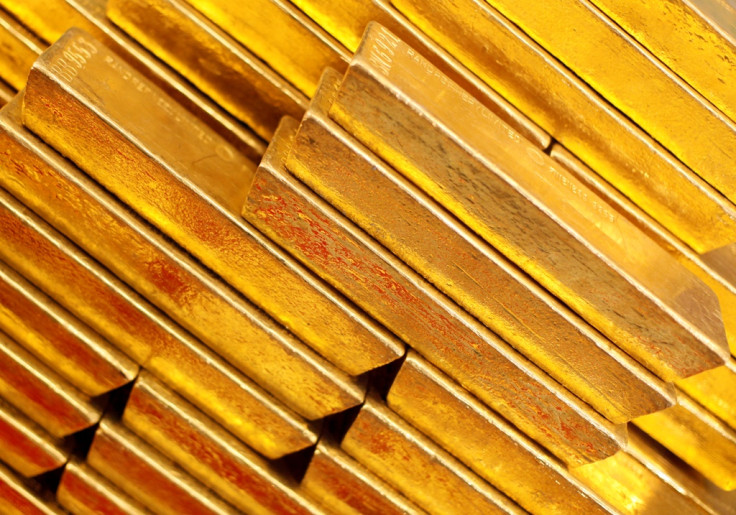Precious warning: Gold won't be the only bubble to burst

Gold is down to a five-year low, at $1,095 (£700, €1,002) per ounce. It is likely to drop below the $1,000 mark before year-end, and then go lower still. Gold's demise reflects something good. It thrived on a mega-crisis which is now receding.
But gold's downfall is also a warning. It isn't the only asset that thrived on extreme crisis medicine. And it won't be the only bubble to burst as US interest rates and the dollar revive.
The gold price is eloquent. Its rise and fall tells the story of a so-far troubled millennium. Prescient investors started to see opportunity in gold a decade ago as housing bubbles formed in the US and elsewhere. The bursting of those bubbles crippled economies, broke banks and provoked fear of a repeat of the Great Depression of the 1930s.
The remedy to which the US Federal Reserve and other central banks turned was money creation: trillions of dollars printed by the Fed like green Monopoly money. The debased dollar plunged, and commodities, which are priced in dollars, soared. All of this was great for gold, the anti-currency to which people turn when they cease to trust governments or banks or mere paper money.
Investor demand for gold roughly trebled from 2005 to 2011, and came from both exchange traded funds and the more traditional bar and coin crowd. Gold's price rose sixfold, from about $300 per ounce in 2001 to a peak of more than $1,800 per ounce in 2011. The irony was that the golden safe haven itself became a speculative bubble.
Even golden bubbles burst.
In 2013 exchange-traded fund (ETF) investors sold 916 tonnes of gold: almost equivalent to their entire investment in the three previous years. The gold price began to slide and is now 40% down on its 2011 peak.
The trends that have hurt gold are mostly good news for the rest of us. Though the world abounds with problems and Greece's latest expensive sticking plaster won't last, the threat of a new Depression has receded. The US economy keeps growing and American unemployment has fallen
The trends that have hurt gold are mostly good news for the rest of us. Though the world abounds with problems and Greece's latest expensive sticking plaster won't last, the threat of a new Depression has receded. The US economy keeps growing and American unemployment has fallen.
The Fed has stopped the quantitative easing programme by which it created extra dollars. And now it looks likely this year to lift its benchmark interest rate from the zero at which it has wallowed since 2008. These signs of normalisation are encouraging, but bad for gold.
The decorative metal pays no interest and loses some of its appeal when dollars and other currencies do. The strong investor demand of past years won't revive soon.
Gold's refuge will be its practical uses, in jewellery, dentistry and technology; and some central banks will continue to want to add gold reserves. In these areas too, however, gold is likely to have to get cheaper before it finds stability.
There is often talk of booming Asian demand for gold jewellery as Indians and Chinese get richer but global jewellery demand for gold in 2014 was a quarter down on a decade ago. That's unsurprising for even after falling by 40%, gold remains twice as expensive in dollar terms as it then was.
And the dollar is on the up against the euro, the yen and many emerging market currencies, making gold still more expensive for many global consumers. Gold's eventual floor is not easy to predict but seems likely to be significantly below $1,000.
Nor will gold be the only asset to slide. With US money-printing halted and the dollar reviving, oil and commodity prices too are on the retreat. The Bloomberg commodity price index is close to its lowest since 2002. For commodity exporters from Argentina to Australia, this is very bad news. Oil exporters are being hit hard.

The once optimistic BRICs are now as tarnished as gold. Brazil and Russia are in recession, India's exports are struggling and Chinese growth has slowed. The MSCI emerging equity index is a fifth down on its 2011 level. Unless emerging economies' growth fundamentals improve there is no reason to foresee a revival.
And what about developed country bonds and equities? US stocks have been in a bull market ever since the dark days of 2009. US 10-year government debt and that of the UK, Spain and Italy pay exiguous yields close to 2%, while German debt pays just 0.73%, as the European Central Bank prints €60bn per month as part of its quantitative easing.
The US inflation rate is zero, just like the Fed's benchmark interest rate. But it seems unlikely that inflation won't revive if US recovery continues. And then Treasury bonds would seem set for a big sell off whose repercussions will be felt across global markets.
Gold may have been the biggest beneficiary of the extreme medicine of the global crisis and the first victim of recovery. But it won't melt down alone. And that broader meltdown is likely to become another big problem for the global economy.
Ian Campbell is an economist and commentator. He was Director for Latin America at The Economist Intelligence Unit, Chief Economist Emerging Markets at ABN AMRO Bank and Head of Latin American research at Bank Boston.
© Copyright IBTimes 2025. All rights reserved.






















